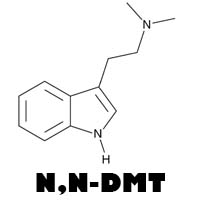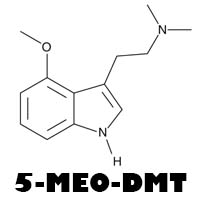Microdosing: Benefits, Risks, and Protocols
Microdosing, the practice of taking sub-perceptual doses of psychedelics, has gained popularity for its potential to enhance mood, creativity, and cognitive function without inducing a full-blown psychedelic experience. In this guide, we'll explore the benefits, risks, and protocols of microdosing to help you understand how it works and how to approach it safely.
What is Microdosing?
Microdosing involves taking very small amounts of a psychedelic substance, typically around 1/10th to 1/20th of a recreational dose. Common substances used for microdosing include LSD and psilocybin (magic mushrooms). The goal is to achieve subtle effects that can enhance daily functioning without causing significant alterations in perception.
Benefits of Microdosing
Many people report various benefits from microdosing, although scientific research is still in the early stages. Here are some commonly reported benefits:
1. Enhanced Mood and Emotional Well-being
Microdosing can lead to improved mood, reduced symptoms of depression and anxiety, and a general sense of well-being. Users often report feeling more positive and emotionally balanced.
2. Increased Creativity and Productivity
One of the most touted benefits of microdosing is the enhancement of creativity and productivity. Many users find that microdosing helps them think more creatively, solve problems more effectively, and boost their overall work performance.
3. Improved Focus and Cognitive Function
Microdosing can enhance focus, concentration, and cognitive function. Users often report better mental clarity, improved memory, and enhanced problem-solving abilities.
4. Greater Connection and Empathy
Microdosing can increase feelings of empathy and connection with others. Users may feel more open, compassionate, and socially engaged.
Risks of Microdosing
While microdosing is generally considered safe when done responsibly, there are potential risks to be aware of:
1. Legal Issues
Most psychedelics are illegal in many parts of the world. Possessing, using, or distributing these substances can lead to legal consequences. Always be aware of the laws in your area before considering microdosing.
2. Psychological Risks
Although rare, some individuals may experience anxiety, paranoia, or other negative psychological effects from microdosing. It's essential to monitor your mental state and discontinue use if adverse effects occur.
3. Lack of Research
Scientific research on microdosing is still limited, and the long-term effects are not well understood. While anecdotal reports are positive, more studies are needed to fully understand the benefits and risks.
Protocols for Microdosing
Several protocols have been developed to guide microdosing practices. Here are two popular methods:
1. The Fadiman Protocol
Developed by Dr. James Fadiman, this protocol involves taking a microdose every three days. For example, you might take a dose on Day 1, skip Days 2 and 3, and then take another dose on Day 4. This schedule allows for a balance between experiencing benefits and avoiding tolerance buildup.
2. The Stamets Protocol
Proposed by mycologist Paul Stamets, this protocol includes taking a microdose for four consecutive days, followed by three days off. Stamets also suggests combining psilocybin with other nootropic substances, such as lion's mane mushroom and niacin, to enhance neurogenesis and cognitive benefits.
Tips for Safe Microdosing
To ensure a safe and effective microdosing experience, consider the following tips:
3. Start Low and Go Slow
Begin with the lowest possible dose and gradually increase if needed. This approach helps you gauge your sensitivity and response to the substance.
4. Keep a Journal
Track your doses, experiences, and any changes in mood, cognition, or behavior. Keeping a journal can help you identify patterns and optimize your microdosing routine.
5. Listen to Your Body and Mind
Pay close attention to how you feel and be prepared to adjust your dosage or protocol if necessary. If you experience any negative effects, consider taking a break or discontinuing use.
Conclusion
Microdosing offers a promising approach to enhancing mood, creativity, and cognitive function. However, it's essential to approach it with caution, awareness, and respect for the potential risks. By following established protocols, monitoring your experiences, and staying informed, you can safely explore the benefits of microdosing and determine if it's right for you.
Suggested Images for the Blog Post
- Microdosing Substances: Images of LSD blotters, psilocybin mushrooms, and other common microdosing substances.
- Enhanced Mood and Creativity: Photos representing positive emotions, creativity, and productivity.
- Microdosing Protocols: Infographics detailing the Fadiman and Stamets protocols.
- Safe Practices: Images of journals, low-dose measurements, and mindful practices.






